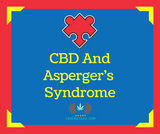If you or a loved one have a disability, have you thought about getting a service dog? There are many different types, and they could make your life so much easier. But before you commit to a new member of the family, you should learn more about service dogs and what they can do for you.
What Is A Service Dog?

A service dog is a dog that is trained to help someone who is disabled. By either performing tasks for them or benefitting the disabled individual in some way. The work that the service dog does has to be directly related to the individual and their disability. Service dogs do things like:
- Pulling a wheelchair
- Alerting someone when an allergen is present
- Assisting someone with visual impairments to navigate
- Helping someone hard of hearing be aware of sounds
Is A Service Dog An Emotional Support Or Therapy Dog?
You might notice a dog walking around in a hospital, but not every dog in public with a vest is a service dog. Emotional support and therapy dogs aren’t trained in the same way and don’t have the same rights. Emotional support dogs do need a letter from a licensed therapist to qualify and need to have a good temperament; the qualifications are less strict. Therapy dogs are used for high-stress environments like courtrooms or hospitals, and they generally do not serve just one person and have the same rights in places as a regular pet.
Different Types Of Service Dogs
Severe Allergy Alert Dogs (AADs)
Severe Allergy Alert Dogs are for individuals who have life-threatening allergies. These service dogs alert their handler to any allergens that may be nearby like tree nuts, shellfish, or gluten. They usually wear a vest with emergency information for the handler with medical information and medication. To help the dog work more efficiently, it is best that their vest has a patch that says, “In the event of emergency check the pockets.”
Autism Assistance Dogs
Autism Assistance Dogs fall into the same category as Sensory Processing Disorder Dogs. These service dogs help to calm and ground the handler who is on the spectrum with deep pressure or tactile stimulation. These dogs don’t have any specific gear, but if the individual on the spectrum is nonverbal, they should carry emergency contact information and protocol in their vest.
Brace/Mobility Support Dogs (BMSD)
Brace/Mobility Support Dogs are for individuals who have balance issues because of a disability and help by counter-balancing. They can also retrieve things, open and close doors, or do other day-to-day tasks in everyday life or an emergency. These dogs need to be at least 23 inches tall and 55 pounds and be proportionally larger if the handler with the disability is a larger person. These service dogs wear specially designed and fitted harnesses, but they don’t always have to have a brace to be a Brace/Mobility Support Dog.
Diabetic Alert Dogs (DADs)
Diabetic Alert Dogs can help people with diabetes know when they have potentially deadly high or low blood sugar. These dogs are even trained to call 911 on a special alert phone if their handler is unresponsive. These dogs wear emergency protocol vests in case they are the first ones in contact with the emergency response.
Hearing Dogs
Hearing Dogs are for helping people who are deaf or severely hard of hearing. These service dogs are trained to recognize environmental sounds like doorbells, alarms, phones, and cars. Many state laws require that hearing dogs wear an orange vest which is reserved specifically for them.
Medical Alert Dogs (MADs)
Medical Alert Dogs help people with verifiable and measurable bodily symptoms. They can alert the handler their blood pressure, hormone levels, or other symptoms are reaching dangerous levels. They do this by sensing odor changes associated with these bodily changes. These dogs are useful for people who have disabilities like type 1 diabetes or Addison’s disease.
Psychiatric Service Dog (PSDs)
Psychiatric Service Dogs are not emotional support or therapy dogs. The difference is the rigorous training and public access. These dogs help assist their handler with anxiety, PTSD, depression, or other psychiatric disabilities. These dogs are trained to create personal space for the individual, wake up someone having nightmares, or get medication when the person can’t.
Seizure Response Dogs
Seizure Response Dogs can detect a seizure before it happens. They are also trained to deal with the during and after aspects of seizures. They can retrieve medication, do deep pressure stimulation to help the seizure end early, find help, or call 911.
Visual Assistance Dogs
Visual Assistance Dogs are for visually impaired or blind individuals. They are trained to disobey unsafe cues like when someone wants to walk into the street when there is an oncoming car. These dogs can learn routines and where to go over time, but it is still important for the disabled handler to know where they are at all times.
Wheelchair Assistance Dogs
Wheelchair Assistance Dogs can help pull a wheelchair, pick up dropped objects, open doors, or anything else the handler in the chair may need. Many dogs are equipped with a special vest that makes it easier to pull the wheelchair or open the door.
Fetal Alcohol Spectrum Disorder Service Dogs
Fetal Alcohol Syndrome Service Dogs help support children who were exposed to alcohol in the womb and have been diagnosed with fetal alcohol spectrum disorder. Children with this disorder may have physical and mental limits that the service dog can help with. These dogs can help with deterring negative behavior from the child, offering comfort during meltdowns, or even track your child who has run off.
Where Can Service Dogs Go?

If you get a service dog, will you be allowed access to public spaces? Will you come across and public complications with your service dog? Under the Americans with Disabilities Act, service dogs are required to be allowed in places where the general public is allowed to go. A dog would be allowed in a patient’s room in a hospital, but it would be inappropriate to let them in a sterile environment like an operating room.
Requirements For Service Dogs
If you want to get a service dog, they are required to be harness, leashed, or tethered. The only exception to this rule is if the device interferes with the animal’s work or if the handler is unable to use the device because of their disability. If you cannot control the devices, control over the animal must still be maintained through signals, voice, or other controls.
What Happens If It Isn’t Obvious That The Dog Is A Service Dog?
It isn’t always obvious what job the service dog provides. People who are hard of hearing may have silent cues, having a dog act without other’s knowing why the dog is behaving that way. In a public setting, the staff may ask the following questions:
- Is the dog a service animal for a disability
- What work has the dog been trained to do
They aren’t allowed to ask you about your disability, they don’t need medical documents, training documents for the dog, or special ID for the dog, or ask for the dog to demonstrate their abilities.
What If You Are Turned Down Because Of Allergies Or Fear For Dogs?
Allergies and being afraid of dogs aren’t a legal or valid reason to refuse access to a service dog. They can, however, request you try to make accommodations. These accommodations shouldn’t be anything that would make the handler uncomfortable; it should be things like assigning them to a different location if someone in the classroom is allergic to dog dander.
When Can Someone Ask You To Remove Your Service Animal?
The only time anyone can ask you to leave with your service dog or to ask you to have your service dog removed is for the following reasons:
- The service dog has gotten out of control and the handler can’t or won't handle it effectively
- The dog is not housebroken
If these criteria are met, the staff is supposed to allow the handler to obtain goods or services without the service dog present.
Can My Service Dog Go Into A Restaurant?
Yes. Do local health codes prohibit animals? It doesn’t matter. Any establishment that sells or prepares food is required by law to allow service animals into public areas. Your service dog won’t be allowed in the kitchen, but the front lobby is your right.
What Other Rights Does My Service Dog Have?
- You cannot be isolated from other patrons because of your service dog
- You can not be treated less favorably because you have a service dog
- You cannot be charged fees others aren’t required to pay because of your service dog
- If the establishment charges for pets, they must waive the fee for your service dog
Should You Get A Service Dog?

Service dogs are a great way to gain independence that disabilities try to take away from you. They are a great way to provide comfort in situations that may be difficult for people. This dog isn’t just someone who helps you or your family member get along through the day; they eventually will become a part of the family. If you feel that one of these service dogs would make your life easier, you can talk to your doctor about getting a recommendation.
Do you have a service dog? How did it change your life? We would love to hear about your experience in the comment section below!













